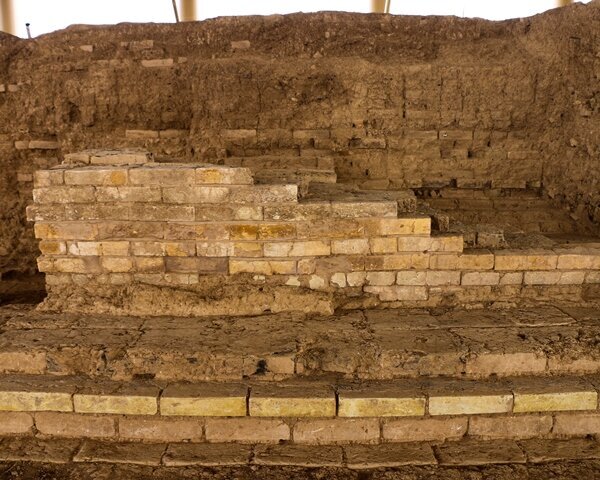Royal wall unearthed in Persepolis

TEHRAN - A new finding in Persepolis reveals an eastern wall of a grand prehistorical gateway believed to have been constructed upon the order of Cyrus the Great.
Adorned with striking glazed bricks, the astonishing structure, also referred to as the Gate of Cyrus, is constructed entirely from a combination of bricks and tiles. It spans an impressive 40 meters in length, and 10 meters in width, and boasts a substantial thickness of five meters.
One of the charming construction techniques employed in the creation of the structure is the extensive use of bitumen mortar, Mehr reported on Thursday.
Legendary animals, eight-petaled flowers, and a palette of glazed bricks in shades of white, yellow, blue, and green constitute motifs used to decorate the gate, which was one of the most renowned ones in the ancient world.
The discovery was made in a site known as Tall-e Ajori, which has been subject to archaeological work over the past decade.
The royal city of Persepolis ranks among the archaeological sites that have no equivalent, considering its unique architecture, urban planning, construction technology, and art. Persepolis, also known as Takht-e Jamshid, whose magnificent ruins rest at the foot of Kuh-e Rahmat (Mountain of Mercy) is situated 60 kilometers northeast of the city of Shiraz in Fars province.
The city was burnt by Alexander the Great in 330 BC apparently as revenge against the Persians because it seems the Persian King Xerxes had burnt the Greek City of Athens around 150 years earlier. The city’s immense terrace was begun about 518 BC by Darius the Great, the Achaemenid Empire’s king. On this terrace, successive kings erected a series of architecturally stunning palatial buildings, among them the massive Apadana palace and the Throne Hall (“Hundred-Column Hall”).
This 13-ha ensemble of majestic approaches, monumental stairways, throne rooms (Apadana), reception rooms, and dependencies is classified among the world’s greatest archaeological sites. Persepolis was the seat of the government of the Achaemenid Empire, though it was designed primarily to be a showplace and spectacular center for the receptions and festivals of the kings and their empire.
Persepolis is marked by a large terrace with its east side abutting the Kuh-e Rahmat (“Mount of Mercy”). The other three sides are formed by a retaining wall, varying in height with the slope of the ground from 13 to 41 feet (4 to 12 meters); on the west side, a magnificent double stair in two flights of 111 short stone steps leads to the top. On the terrace are the ruins of several colossal buildings, all constructed of a dark gray stone (often polished to a marble-like surface) from the adjacent mountain.
AFM
